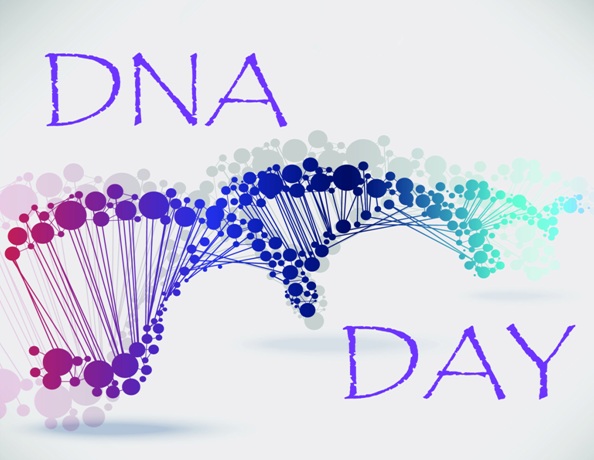First 3D Structures of Active DNA: Update on World DNA Day
- Rupendra Shrestha


World DNA Day is celebrated on April 25 every year by number of Countriesworldwide. It is celebrated for the discovery of the DNA double helix in 1953 by Watson & Crick and the completion of the Human Genome Project in April 2003. Likewise, in Nepal, the National DNA Day is organizing by Biotechnology Society of Nepal (BSN) every year in collaboration with the different research organization to make interaction with students, teachers, researchers as well as public by delivering talks on significance of genetics and genomics in medicine, making awareness on genomics as well as by conducting various events like research presentation and DNA Art and essay competition etc. BSN is an official host organization for National DNA Day Celebration in Nepal as they are registered in National DNA Day Event Map initiated by the National Human Genome Research Institute (NHGRI).
DNA Discovery
DNA was first observed in 1869 by the German Biochemist, “FrederichMiescher” but the significance of the molecule was not realized till 1953 when James Watson, Francis Crick, Maurice Wilkins and Rosalind Franklin published a paper on Nature Journal about the double helix structure of DNA and explored its function to carry biological information. However, in 1962 the Nobel Prize in Medicine was awarded to Watson, Crick, and Wilkins for their discoveries concerning the molecular structure of nucleic acids and its significance for information transfer in living material. DNA is an incredible structure, tightly coiled molecules that house number of genes that codes for specific functions in the organism like growth, development, cellular physiology and code for the specific character. The DNA length varies in different organism but complex organism has greater DNA content in its cells. In human, the DNA is nearly 2-3 meters long thin thread-like structure packed into a nucleus.
First 3D Structure of Active DNA- Recent Breakthrough
Recently, researcher from the University of Cambridge and the Wellcome Trust-MRC Stem Cell Institute determined the first 3D structures of entire mammalian genomes from individual cells. The scientists explored the mechanism of DNA folding into a short chromosome that fit together inside the cell nuclei. Stevens TJ and his colleagues used a combination of imaging and a molecular technique called Hi-C to look DNA packing at high resolution. Hi-C is a Chromosome Conformation Capture (3C) analysis used to reveal the structure of genome packing based on the DNA sequences using high throughput sequencing. Practically, the cells are crosslinked with formaldehyde to stabilize the chromatin (DNA and packing protein-histone together) which allows detecting the chromatin interactions within chromosome as well as between chromosomes. Then, the stabilized chromatin snipes with a molecular scissor (restriction enzymes) into tiny fragments. All the genomic fragments are labeled with a biotinylated nucleotide before ligation, thereby marking ligation junctions. The biotin is removed from unlighted ends of the linear fragments and the molecules are fragmented to reduce their overall size. Further, molecules with internal biotin incorporation are purified with streptavidin coated magnetic beads and modified for next-generation sequencing to analyze the chromatin interaction. The most active gene was arranged interiorly and separated in space from a less active region that interacts with the nuclear membrane. The 3D structure of intact mouse embryonic stem (ES) cell genome and interaction is illustrated in accompanying videos
video 1: Intact genome from a mouse ES cell with 20 chromosomes with different colors.
https://www.youtube.com/watch?v=PBMvMSr-OLE&feature=youtu.be
video 2 :Structure of a mouse ES cell genome (blue indicates active genes and yellow indicates genes interacting with the membrane)
https://www.youtube.com/watch?v=J7lM7VSMy-8&feature=youtu.be
Hi-C was performed in eight individual mouse embryonic stem (ES) cells in which 37,000 to 122,000 DNA junctions were captured representing only 1.2-4.1% recovery of the total possible ligations junctions of the genomes. But, combined with the high-resolution images, they captured enough to assemble 3D structures. Using this approach, the researchers successfully determined the structure of active DNA inside the cell and their interaction with each other to form intact genome. Finally, the understanding of DNA folding helps to know how specific genes and the DNA regions interact with each other. Also, when genome structure controls specific genes and how strongly, and when genes are switched ON/OFF. Therefore, this new approaches helps in understanding the DNA folding and their interaction which plays a critical role in the development of organisms and also, used to study abnormal cancer cells and cause of diseases.





Feedback